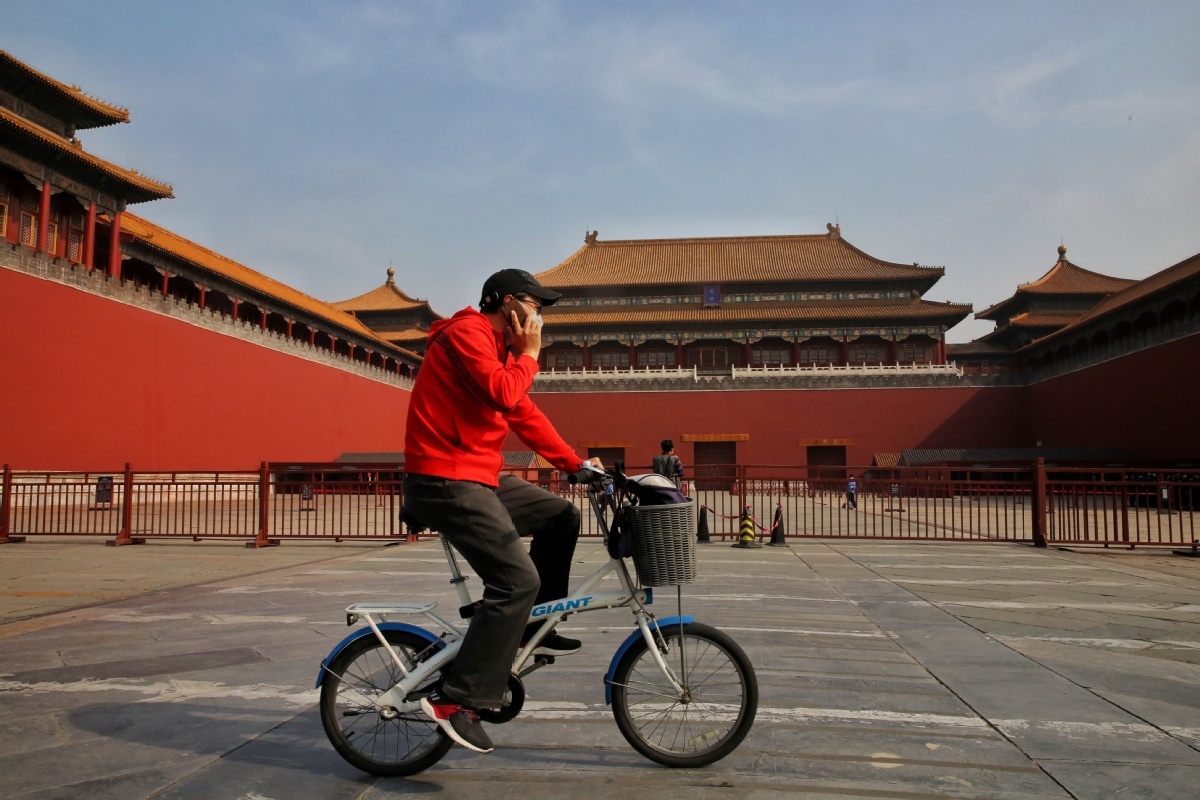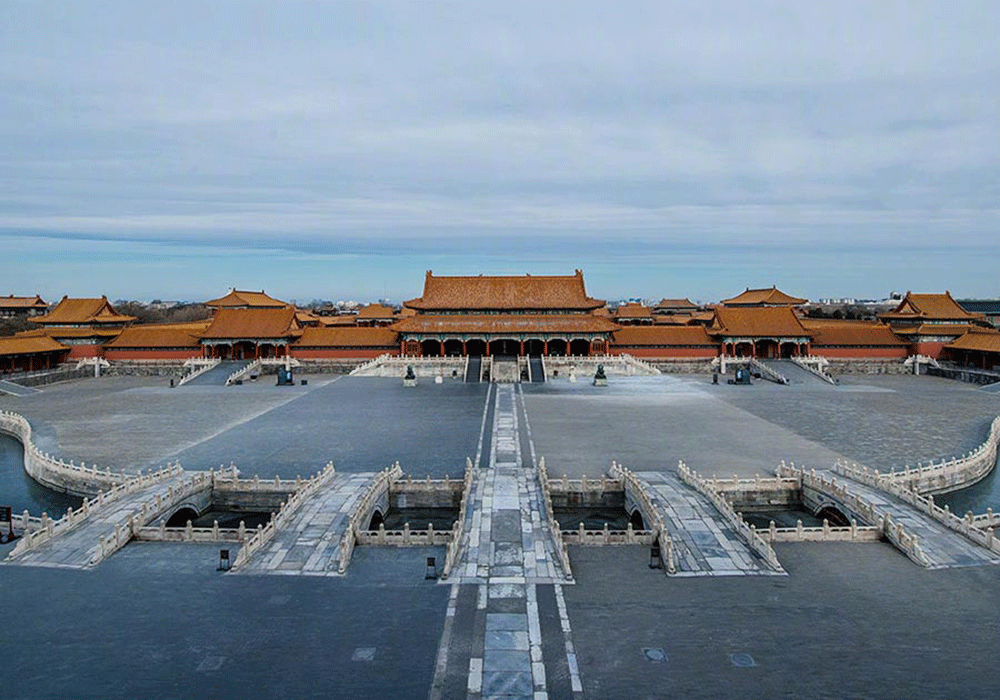
A man rides through the square in front of the Palace Museum's Wumen Gate on April 30, 2020. (Photo: chinadaily.com.cn)
Cultural heritage enthusiasts got a long-awaited "surprise" on the eve of the May Day holiday.
The Palace Museum, also known as the Forbidden City, announced Wednesday night it will "gradually resume opening-up in good order" beginning Friday, ending a more than three-month closure due to COVID-19.
The announcement reignited the public's frustrated passion for the Forbidden City, China's former imperial palace, as this year marks its 600th anniversary.
According to the museum's online booking system, tickets for Friday sold out an hour and a half after the news was released at 9:30 pm, and all 25,000 tickets throughout the five-day May Day holiday were gone within 12 hours.
Only some of the outdoor sections, including the central route, and courtyards and gardens in western and eastern side of the compound, will be open to the public starting Friday. All city walls and galleries will remain temporarily closed.
An ID card is needed to buy tickets via advance online reservation and may be purchased up to 10 days before a planned visit. A 5,000-visitor daily cap is set — 3,000 before 1 pm and 2,000 afterward. Before the COVID-19 outbreak, the cap stood at 80,000 visitors per day.

The Gate of Supreme Harmony (Taihemen). (Photo: Official Sina Weibo account of the Palace Museum)
The National Museum of China also announced on Wednesday night it will reopen starting Friday and will adopt similar policies to the palace's.
It will accept 3,000 visitors daily, scattered over three time periods, and online reservations are available seven days in advance. Tickets for Friday must be booked by noon on Thursday. All tickets are free.
The two museums in the heart of Beijing, holding China's two largest collections — about 1.86 million at the Palace Museum and 1 million in the National Museum of China — were closed before Spring Festival because of the coronavirus.
Visitors' body temperature will be checked before they enter, and they are required to wear face masks in the museums. "Green" QR codes on their mobile phones, signifying good health, are required, and they must maintain 1-meter social distancing.
In a State Council Information Office news conference on Thursday, Luo Shugang, minister of culture and tourism, called on the country's scenic sites to learn from the examples set by the two museums.
"We're still in the containment phase of virus control. The pressure we're facing is not small," he said.
Luo urged local administrators to avoid hastily increasing visitor flow and to plan well.
Seventy percent of China's scenic spots have reopened.
According to the Ministry of Culture and Tourism, daily visits to all scenic sites will be up to 30 percent of their maximum capacity.
"Tourists have been in home quarantine for a pretty long time," he said. "Their desire for travel will be high ... (but) tourism resources can only be partially accessed now, with limitations."


